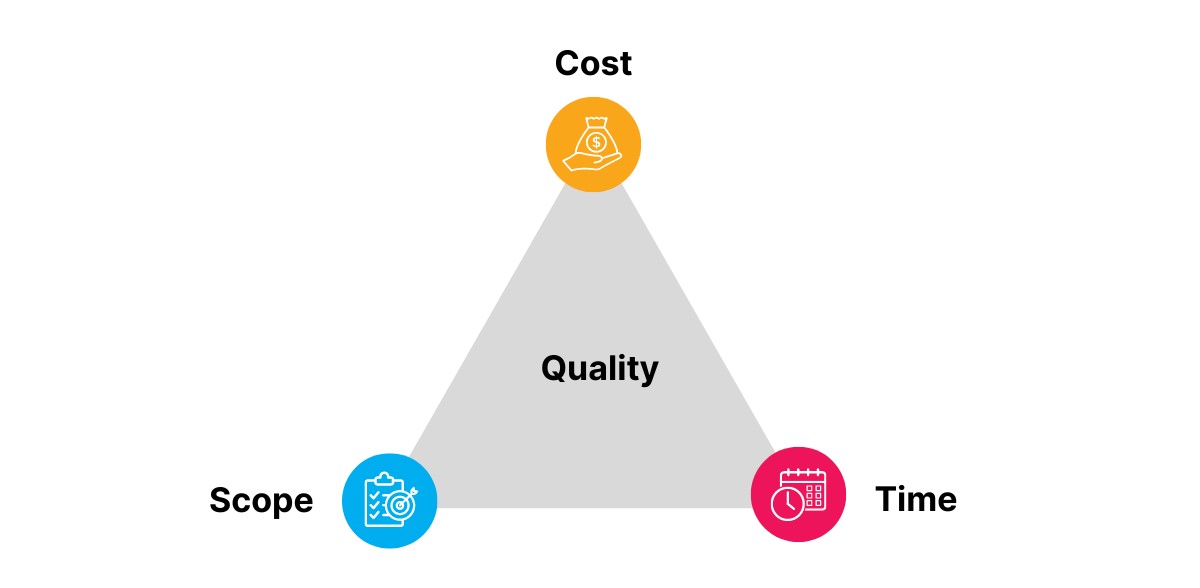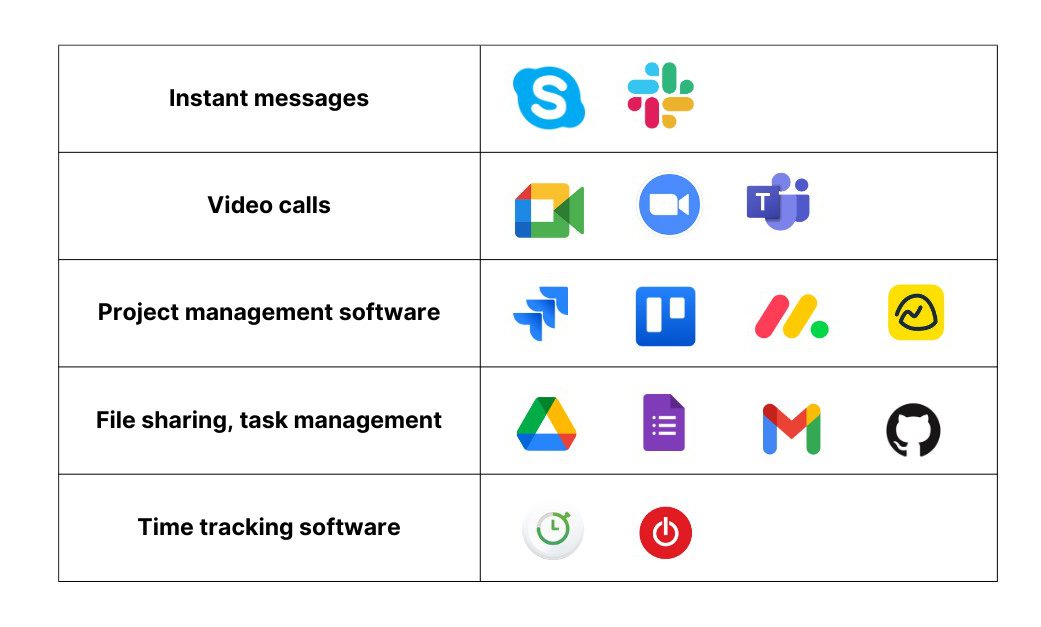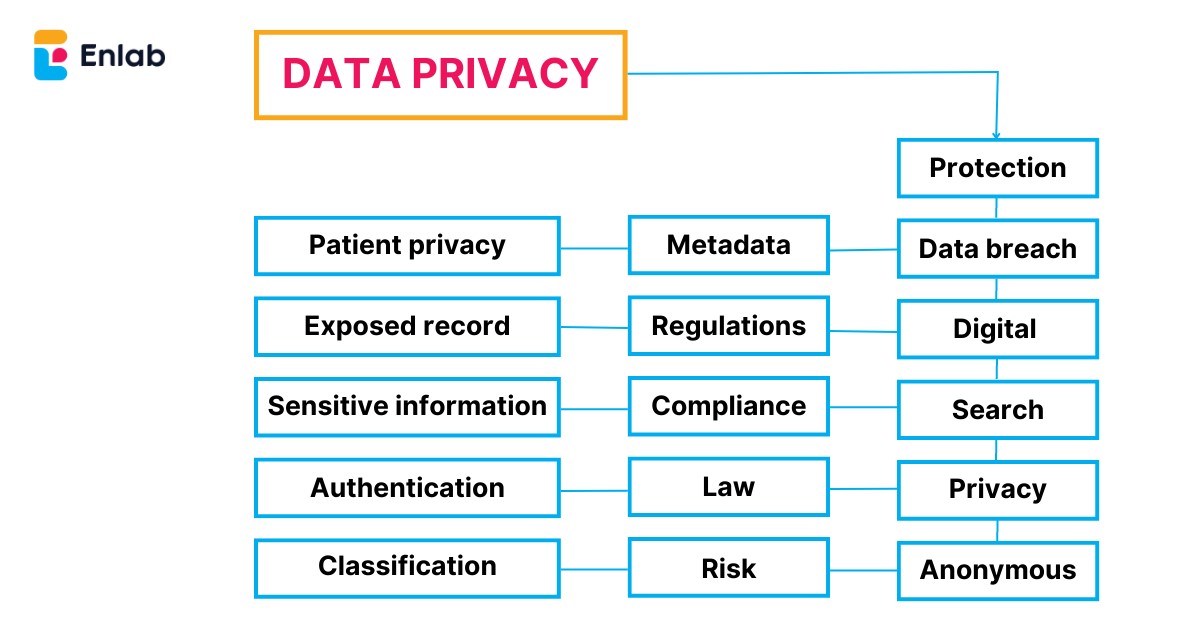Project management is similar to a circus balancing act. However, achieving balance does not require magic, just focus, effort, and expertise. During the project development life cycle, you will encounter various challenges. As a product owner, you need to learn how to balance the project constraints and overcome these hurdles in order to get your project on the right track and increase its performance.
In the previous blog, we discussed key tactics that help you effectively set up a dedicated team tailored to your project and shared the real-life story of how our client successfully set up a dedicated team for their project at Enlab. Despite this, managing an outsourcing team can be a daunting task for some companies; they often have bad experiences or face struggles in project management.
To make outsourcing work smoothly, it is essential to shift your thinking and adopt practices to accommodate it. This article will cover the most significant obstacles that companies face while managing outsourcing teams and provide practical solutions based on our perspectives and own experiences.
Common challenges in managing a dedicated team and how to overcome them
Project deadline
The first popular project management challenge that no business owner likes to encounter is missing the deadline. Being behind schedule never feels good, and it can have serious consequences for organizations:
- Cause delays and put projects at risk.
- Generate bottlenecks that disrupt workflows and prevent cross-functional teams from completing their tasks.
- Incur significant financial losses.
- Lost opportunities for growth and innovation.
- Demoralize the team and erode trust over time among stakeholders.
It is commonly assumed that missed deadlines result from bad work habits or low productivity. Yet, endless reasons might sustain a failure to meet deadlines. Below are two major matters that frequently happen based on our experiences:
- Inaccurate time estimates
At each project's initial stage, the product manager and their team members will typically collaborate to break down the tasks into smaller ones to reach the ultimate goal. However, sometimes your team might underestimate or overestimate the project's completion time, overlook potential risks, and allocate inadequate resources. These factors can ultimately result in exceeding the deadline, rushed work, and lower-quality deliverables. - Scope creep
"Scope creep" is a term used to describe the nightmare for the software development team when a project exceeds its original plan. The reason why it occurs is when additional requirements are added to the project after it has got rolling. This can lead to an increase in the workload needed to complete the project, delays in the schedule, going over budget, and even project failure. For example, if your team lead suddenly faces a reduction in resources but is still expected to deliver the same high-quality output level, it can hamper the project's progress, and trigger scope creep.
Solutions:
You first need to partner with a trustworthy software vendor experienced in Agile development. Unlike traditional methods like Waterfall, Agile lets your team break the project into smaller cycles and provide deliverables after each sprint. By conducting periodic team meetings, delivering progress reports, collecting client feedback, and utilizing management tools like Kanban boards and Gantt charts, you are capable of managing the project in one place, keeping everyone on the same page, and handling workloads efficiently. Participating in regular sprint reviews and retrospective meetings can help you identify potential project failures early on and modify timelines and milestones to achieve desired objectives.

Next, it is important to establish clear, realistic deadlines. You can collaborate with your team to estimate based on project scope, complexity, available resources, previous experience, and potential risks. The more clear and concrete they are, the more team members will be motivated and easily execute their job to accomplish the tasks on schedule.
To prevent scope creep, you are able to leverage a work breakdown structure (WBS) document for project management. It enables your team to clearly define project scope, document requirements, and expected deliverables, prioritize them, and better resource planning. Also, you need to regularly monitor the project's progress against the plan to identify any deviations from the original scope. This will allow your team to take corrective action early on before the scope creeps too far.
Quality control
The quality of a project is measured and evaluated by how well the project deliverables meet the client’s expectations. The triple main constraints directly impact project quality, also known as the project management triangle, namely scope, cost, and time. Satisfying the stakeholders' requirements of product quality requires balancing these constraints and even determining what trade-offs you are willing to make. Otherwise, they can result in unmet planned deliverables, scope creep, poor product quality, high technical debts, and hidden flaws.

Regarding technical debt, it is a critical aspect of ensuring project quality, either intentional or unintentional. The former, for example, is incurred purposefully for strategic objectives like meeting a deadline. Meanwhile, the latter occurs due to a lack of understanding, accidental mistakes, or—in some cases—poorly written code.
According to our delivery manager, technical debt is prevalent in many projects. Still, it occurs in a negative direction due to the following main causes:
- Inadequate comprehension of current and future business requirements leads to incorrect system design, technology selection, and inappropriate solutions that do not satisfy future expansion growth needs.
- Poor quality of solution design and execution by team members.
- Inadequate supervision and quality control by technical leads and project managers.
- Lack of deployment of essential tools and activities, such as code review, automated testing, refactoring code, and more, resulting in an inability to identify technical debts and address risks promptly.
Solutions:
Choosing a dedicated software vendor that acquires the appropriate skills, experience, and technologies is your first priority. At the initial stage, you need to clearly define the software product's quality expectations upfront with your development team, including the acceptance criteria and quality standards. This helps ensure the outsourcing team understands what is expected of them and how the final product will be.
Delivering a high-quality product requires avoiding technical debt during the development cycle. You can detect technical debts in your project by keeping an eye out for the signs and details below:
- Code that is hard to maintain or modify
- Frequent code changes or updates
- Use of outdated libraries or frameworks
- Lack of automated tests
- Repeated code blocks or functions
- Inconsistent coding standards or practices
- The high number of bugs and issues
- Increased development time
- High maintenance and support costs
In addition to these indicators, you should track various files and data to check if your project has technical debt:
- Code files and repositories: Source code, configuration files, and build scripts.
- Technical documentation: Architecture documents, design documents, and technical decisions made during development.
- Test cases and reports: Test plans, test cases, and test results to identify code areas that have not been thoroughly tested.
- Project management data: Issue tracking logs, sprint retrospectives, and other project management information.
- Customer feedback and complaints: End user feedback, customer support tickets, and bug reports.
- Code review comments and feedback: Feedback from code reviews help detect potential technical debt issues.
- Metrics and KPIs: Metrics such as code complexity, code churn, technical debt ratio, code coverage, and code smells can help track technical debt over time.
Our delivery manager also provides nine practical techniques to control project quality, track technical debts, and get rid of them as quickly and efficiently as possible:
- Prioritize code quality: Make sure your team adopts coding standards and guidelines, writes clean, maintainable code, and conducts thorough testing. This will reduce the likelihood of accumulating errors over time.
- Use Agile development methodologies: These approaches include quality assurance activities, predefined milestones, and checkpoints at each phase and sprint of the development process. It enables the team to accomplish tasks to meet the deadline without sacrificing the testing phase and product quality.
- Conduct regular code reviews: Regular code reviews help ensure the code is maintainable, testable, and adheres to best practices. We can use various tools to analyze code and track your technical debt, such as Stepsize extensions for VSCode, JetBrains, Visual Studio, SonarGraph, and Klocwork.
- Implement Continuous Integration and Deployment: Continuous integration and deployment (CI/CD) allow code changes to be tested and deployed quickly and consistently.
- Refactor code: Regularly refactoring code involves eliminating duplicate code, improving code clarity, and guaranteeing the code follows established standards and conventions.
- Use automated testing: Automated testing is a good practice for detecting new technical issues before they become bigger problems.
- Invest in infrastructure: Outdated or inadequate infrastructure can be another reason leading to technical debt. You must check whether your team uses obsolete tools, hardware, and software to implement their work.
- Communicate with stakeholders: Good communication is key to avoiding technical debt. You need to ensure that everyone on your team understands the importance of code quality and the risks associated with technical debt. Encourage open communication and collaboration to identify and address issues early on.
- Prepare maintenance plans: Maintenance is an ongoing process that involves addressing technical debt as it arises. Thus, you can easily allocate time, cost, and resources properly to both manage technical debts and build new features.
Communication barriers and time zone disparities
Communication also will present a challenge if you outsource external teams. It is especially common in today's digital world when domestic talent shortages and mass job-cut layoffs occur in the US, Canada, Western Europe, and Australia. Many businesses move their in-house software development activities into outsourcing in Asia or Eastern Europe to fill team gaps, accelerate the development timeline, and cut costs.
Seemingly less significant problems like time zone, language, and cultural differences can contribute to miscommunications and misunderstandings. It can ultimately impact the project's success. Thus, effective communication is essential in ensuring all team members are on the same page, understand the project's goals, and comprehend their respective roles and responsibilities.
Solutions:
Hiring a dedicated team that experiences working with Western companies and communicating in English clearly are effective strategies to overcome the communication barrier. It would help if you had a project manager (PM) who communicates well to coordinate meetings and allocate tasks properly to keep everyone in the loop about project progress, avoid miscommunication and minimize project delays.
While challenging in time zone differences, you might leverage a “follow the sun” model, adding hours to the workday through continuous, round-the-clock deployment. Given that, you can prioritize critical tasks, resolve project dependency, clarify requirements, test demos, and give feedback to your outsourced team. This brings numerous benefits to startups that want to ship their MVPs or products to the market as soon as possible.
If you consider outsourcing with a Vietnam outsourcing team, the following table describes the time differences between Vietnam (UTC+7 on Indochina Time – ICT) and other locations based on a typical Vietnam workday (8 AM to 5:30 PM). We hope you can take full advantage of the overlapped time for more effective collaboration.
| Client’s time zone (Standard Time) | UTC (Coordinated Universal Time) | Time differences | Locations | Workday time in Vietnam (UTC+7) | Time in client location |
| PST | UTC-8 | +15 hours | San Francisco, Los Angeles, California, Seattle, Vancouver, … | 8:00 AM - 5:30 PM | 17:00 PM - 02:00 AM |
| CST | UTC-6 | +13 hours | Texas, Houston, Florida, Illinois, Manitoba, … | 8:00 AM - 5:30 PM | 19:00 PM - 4:00 AM |
| EST | UTC-5 | +12 hours | New York, Washington DC, Ohio, Toronto, Montreal, Ottawa, Quebec … | 8:00 AM - 5:30 PM | 20:00 PM - 5:00 AM |
| GMT | UTC | +7 hours | London, Lisbon … | 8:00 AM - 5:30 PM | 1:00 AM - 10:00 AM |
| CET | UTC+1 | +6 hours | Berlin, Paris, Amsterdam, Madrid, Bern, Stockholm,... | 8:00 AM - 5:30 PM | 2:00 AM - 11:00 AM |
| CST | UTC+8 | -1 hour | Singapore, Hong Kong, Taipei,... | 8:00 AM - 5:30 PM | 9:00 AM - 6:30 PM |
| KST, JST | UTC+9 | -2 hours | Seoul, Tokyo,... | 8:00 AM - 5:30 PM | 10:00 AM - 7:30 PM |
| AEST | UTC+10 | -3 hours | Queensland, Brisbane, Victoria,... | 8:00 AM - 5:30 PM | 11:00 AM - 8:30 PM |
| AEDT | UTC+11 | -4 hours | Melbourne, Sydney, Canberra, ... | 8:00 AM - 5:30 PM | 12:00 PM - 9:30 PM |
Back to our mentioned case study, our New York client (UTC-5) hired our dedicated team in Danang, Vietnam (UTC+7). Despite a +12 hour time difference, we found a way to work efficiently by having the Vietnam development team work on tasks during our daytime hours and the New York team takes over during theirs. This also helps to maximize productivity and get more things done around the clock. We often schedule meetings and demos flexibly to avoid disrupting the client's operations. More importantly, fostering a culture of communication and collaboration with transparency, integrity, and timeliness is crucial for building trust and achieving better project outcomes.
Additionally, it is essential to establish frequent and effective communication channels and utilize project management platforms like Slack, Skype, Email, Drive, Github, Jira, etc. Regular online meetings and a permanent rapport channel open 24/7 will let you bridge the space-and-time gap between you and your outsourcing development team.

Data security
Protecting sensitive customer data from leaks continues to be many business owners' major concern. Data is everything in the modern age, and losing it for whatever reason is unacceptable. With so many security breaches occurring on a daily basis, online applications must be thoroughly secured, which is the responsibility of your software development team. So, how do you deal with ever-changing security threats?
Solutions:
The critical point is to sign a Non-Disclosure Agreement (NDA) with a trustworthy software development company as early as the consultation stage. This can help protect trade secrets, sensitive user data, and intellectual properties that constitute a competitive edge.
Also, some best practices should be taken into account:
- Use robust, reliable backup systems in place.
- Create software using high-level programming languages with built-in security features.
- Perform security assurance tasks such as penetration testing and code review are required.
- Implement essential core activities to produce secure applications and systems.
- Require your team to safely store customer data and use them to the extent required to plan and execute the project.
- Do not allow your team members to disclose your data to third parties without written consent from your side.

Read also:
- How to set up a dedicated software development team successfully
- How to avoid the top pitfalls in offshore software development.
- How to protect intellectual property when working with an outsourcing software development team
Final thoughts
Hiring a remote dedicated team of developers is a good choice for your project. Such a dedicated team enables you to focus on delivering your software product with top-notch quality. You can accelerate time to market, reduce costs and gain competitive advantages against rivals. All this can happen if you know how to manage these teams well.
You may encounter several common challenges when monitoring a software development team. With this article, we hope you can grasp key practical strategies and give you a better understanding of how to avoid future mishaps.




